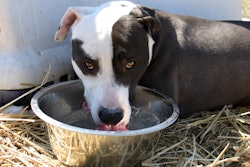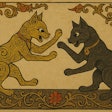
Researchers analyzed 93 pet food products sold on the Chinese pet food market for their heavy metal content. The research team assessed concentrations of five toxic metals: lead (Pb), cadmium (Cd), chromium (Cr), mercury (Hg) and arsenic (As). The scientists bought 45 cat foods and 48 dog foods, with 79 dry food products and 14 canned food products. The pet foods were produced in the United States, Spain, Thailand, Germany and New Zealand and purchased from stores in Beijing, Shenzen and Wuhan. No products produced in China were included. While all canned foods fell within safe limits, some dry foods, including those made in the U.S. and Europe, exceeded Chinese legal thresholds for Cr and Pb. Dry pet foods also had higher concentrations of arsenic than wet foods.
“As the long-term accumulation of toxic metals in food poses significant health risks to pets, there is a growing concern among people regarding toxic metal contamination in pet food,” the researchers, led by animal nutrition scientists at Huazhong Agricultural University in Wuhan, China, wrote in Nature’s Scientific Reports.
The pet food samples were manufactured between 2021 and 2022 in the following countries:
- United States: 32 products
- Spain: 29 products
- Thailand: 17 products
- Germany: 10 products
- New Zealand: 5 products
Heavy metal levels in pet foods on Chinese market
- Chromium (Cr) and arsenic (As) were detected in 100% of samples.
- Mercury (Hg) was found in over 97% of samples.
- Lead (Pb) was present in fewer samples but exceeded safety limits in 8.60% of all tested products. One sample contained 5.80 mg/kg of Pb.
- Chromium exceeded the regulatory threshold in 26.88% of all samples, with the highest level detected at 15.47 mg/kg.
- Cadmium (Cd) levels remained below China’s allowable limits across all samples.
At least two toxic metals were detected in every pet food sample, and 26.88% of samples contained all five metals. The most common contamination combination was Cr, Hg and As.In canned foods, 71.43% of samples had three toxic metals. In dry foods, 48.10% contained three metals, and some contained all five.
The researchers noted potential sources of heavy metal contamination in pet food ingredients:
- Meat and bone meal and fish meal are known to contain high Cr and Pb levels.
- Grains and vegetables can accumulate metals like Pb, Cd and As from contaminated soils, especially in mining regions.
- Fish-based proteins, common in cat food, often contain elevated As and Hg levels due to aquatic bioaccumulation.
- Processing techniques such as baking and extrusion may introduce or concentrate heavy metals in dry foods.
- Food packaging, particularly plastics, may leach metals into food during storage.















